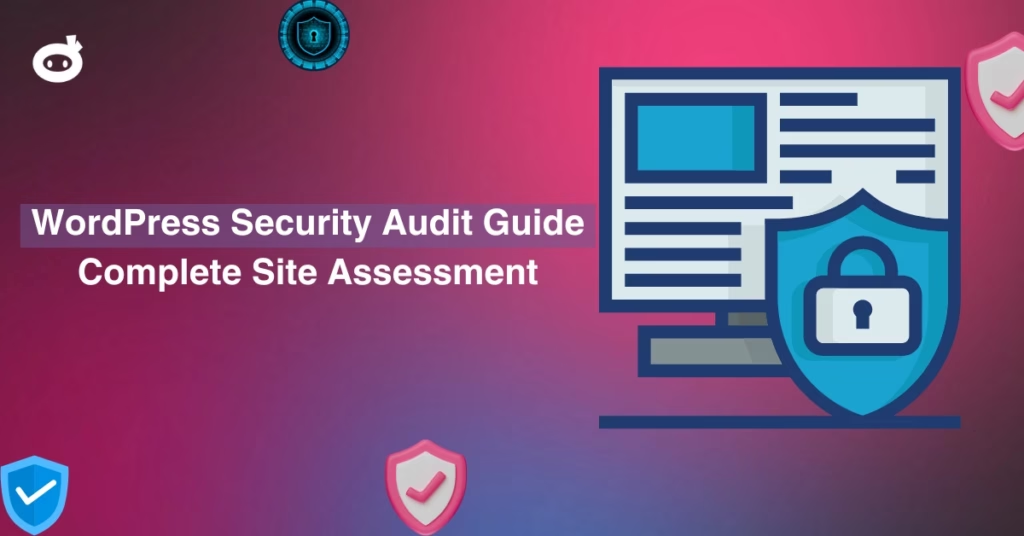Updated on
Cybercriminals are always looking for a way in. Every day, hackers exploit vulnerabilities in web applications to steal data, inject malicious code, and disrupt services. Attacks like SQL injection, cross-site scripting (XSS), and DDoS assaults are becoming more advanced, and traditional security measures, like basic firewalls and antivirus software, can’t stop them.
This is where Web Application Firewalls (WAFs) become essential. Unlike standard firewalls, WAFs analyze and filter HTTP traffic in real-time, blocking malicious requests before they reach your application. They safeguard against injection attacks, unauthorized access, bot-driven threats, and even zero-day vulnerabilities.
Cyber threats are evolving, and outdated defenses leave websites vulnerable. A WAF acts as an intelligent security shield, filtering out cyberattacks while ensuring legitimate users can access your site. For businesses handling sensitive data, financial transactions, or critical services, a WAF isn’t just an extra layer of security, it’s a necessary defense against an ever-growing wave of cyber threats.
Contents
- 1 What is a Web Application Firewall (WAF)?
- 2 Understanding the Difference: WAF vs. Traditional Firewalls
- 3 Key Features and Capabilities of Web Application Firewalls (WAFs)
- 4 Types of Web Application Firewalls (WAFs) and Their Pros & Cons
- 5 Top Web Application Firewall Vendors
- 6 Implementing a WAF: Best Practices
- 7 The Future of Web Application Security with WAFs
- 8 Conclusion: Secure Your Website Before It’s Too Late
What is a Web Application Firewall (WAF)?
A Web Application Firewall (WAF) is a security system that monitors, filters, and blocks malicious traffic before it reaches a website. It acts as a protective shield between users and web applications, filtering HTTP/HTTPS requests to detect and prevent attacks such as SQL injection, cross-site scripting (XSS), and distributed denial-of-service (DDoS) attacks.
Unlike traditional firewalls that secure network traffic, WAFs focus specifically on web-based threats, ensuring that applications remain safe from common vulnerabilities.
Primary Functions of WAFs
A Web Application Firewall provides multiple security functions, including:
Traffic Inspection & Filtering – Monitors incoming and outgoing traffic, blocking harmful requests.
Protection Against Common Attacks – Detects and mitigates SQL injections, XSS, CSRF (Cross-Site Request Forgery), and DDoS attacks.
Bot and Malware Defense – Prevents automated bot attacks, scraping, and malware injections.
Zero-Day Threat Mitigation – Offers proactive protection against newly emerging threats by analyzing behavioral patterns.
Access Control & Rate Limiting – Restricts access to specific users or IPs and limits the rate of requests to prevent brute-force attacks.
Why Are WAFs Important in Today’s Cybersecurity Landscape?
With businesses shifting to digital platforms, web applications have become prime targets for cybercriminals. The increasing sophistication of cyber threats makes WAFs an essential layer of defense.
Rise in Cyberattacks – Hackers constantly evolve their techniques, making web security a top priority.
Regulatory Compliance – Many industries require WAF protection to meet GDPR, PCI-DSS, HIPAA, and other security standards.
Business Continuity – A single attack can disrupt website functionality, leading to financial losses and reputational damage.
Evolving Web Technologies – As websites rely on dynamic content, APIs, and cloud computing, traditional security measures are not enough.
A Web Application Firewall (WAF) is a vital tool in cybersecurity, acting as a protective layer between web applications and cyber threats. With increasing cyber risks, WAFs help organizations safeguard sensitive data, maintain website availability, and ensure compliance with security standards.
Understanding the Difference: WAF vs. Traditional Firewalls
As cyber threats continue to evolve, businesses must deploy robust security measures to protect their online assets. Two key tools in network security are Web Application Firewalls (WAFs) and Traditional Firewalls.
While both serve as defensive barriers, their scope and functionality differ significantly. Understanding these differences helps organizations implement the right security framework.
Scope and Functionality Comparison
Traditional Firewalls: Network-Level Protection
Traditional firewalls act as gatekeepers between internal networks and external sources, such as the Internet. They primarily monitor and filter incoming and outgoing traffic based on predefined security rules.
Key functions of traditional firewalls include:
- Packet Filtering – Examines data packets based on IP addresses, protocols, and ports.
- Stateful Inspection – Tracks active connections to allow or block traffic.
- Intrusion Prevention System (IPS) – Detects and blocks malicious activities at the network level.
- Application Control – Restricts access to certain applications based on network policies.
While traditional firewalls are effective in securing networks, they cannot inspect application-layer threats, leaving web applications vulnerable to attacks like SQL injection, cross-site scripting (XSS), and zero-day exploits.
Web Application Firewalls (WAFs): Application-Level Protection
A Web Application Firewall (WAF) provides specialized protection for web applications by monitoring and filtering HTTP and HTTPS traffic. Unlike traditional firewalls, which focus on network security, WAFs inspect requests at the application layer (Layer 7) to detect and prevent malicious web-based attacks.
Key functions of WAFs include:
- Deep Packet Inspection (DPI) – Analyzes HTTP requests and responses to detect anomalies.
- Signature-Based Detection – Identifies known attack patterns and blocks them in real time.
- Behavioral Analysis – Learned normal user behavior to detect suspicious activities.
- Bot Mitigation – Blocks automated threats like credential stuffing and DDoS attacks.
- API Security – Protects APIs from threats like unauthorized access and data leaks.
Why Traditional Firewalls Aren’t Enough for Web Application Security
Traditional firewalls provide foundational network security but are not designed to handle modern web-based threats. Here’s why they fall short:
- Limited Visibility into Web Traffic – Traditional firewalls inspect packets based on IP addresses and ports, but they don’t analyze payload content, leaving application vulnerabilities exposed.
- No Protection Against OWASP Top 10 Threats – Attacks like injection flaws, session hijacking, and cross-site scripting (XSS) operate at the application layer, which traditional firewalls cannot inspect.
- Inability to Differentiate Legitimate and Malicious Requests – Unlike WAFs, traditional firewalls lack behavioral analytics, making it difficult to detect sophisticated attacks.
- No API Security Features – With the rise of API-driven applications, traditional firewalls fail to secure RESTful and SOAP APIs, leading to potential data breaches.
- Lack of Web-Specific Attack Mitigation – Threats like DDoS attacks, credential stuffing, and bot attacks bypass traditional firewall rules and require specialized WAF features.
Traditional firewalls secure networks, but not web applications. WAFs provide application-level security, blocking advanced threats. Businesses need both for full protection.
Key Features and Capabilities of Web Application Firewalls (WAFs)
As cyber threats evolve, web application firewalls (WAFs) have become an essential security measure for websites and online applications. A WAF acts as a protective shield, filtering incoming traffic and blocking malicious activities before they can exploit vulnerabilities.
Below are the key features and capabilities that make WAFs crucial for website security.
1. Protection Against Common Web Threats
One of the primary roles of a WAF is to protect web applications from the most common cyber threats, which often exploit security vulnerabilities in web applications. These threats include:
- SQL Injection (SQLi): Attackers manipulate database queries by injecting malicious SQL commands, potentially gaining access to sensitive data. A WAF detects and blocks suspicious query patterns.
- Cross-Site Scripting (XSS): Malicious scripts are injected into a website’s input fields, allowing attackers to steal session cookies, credentials, or sensitive data from users. WAFs prevent such scripts from executing.
- Cross-Site Request Forgery (CSRF): A WAF can help prevent unauthorized transactions by verifying the legitimacy of each request.
- Distributed Denial-of-Service (DDoS) Attacks: Some advanced WAFs include DDoS mitigation features, preventing attackers from overwhelming a website with excessive traffic.
By analyzing HTTP and HTTPS requests, a WAF continuously monitors traffic patterns to identify potential attacks, ensuring websites remain protected from common and emerging threats.
2. Traffic Monitoring and Filtering Mechanisms
A WAF serves as a security checkpoint that inspects all incoming and outgoing web traffic. Its monitoring and filtering mechanisms work in multiple ways:
- Deep Packet Inspection (DPI): This allows the WAF to analyze data packets at a granular level, detecting malicious payloads or unusual behavior.
- Behavioral Analysis: Advanced WAFs use machine learning and AI-driven threat intelligence to identify anomalies in web traffic, blocking suspicious activities proactively.
- Blacklist and Whitelist Management: WAFs can maintain a blacklist of known malicious IP addresses and a whitelist of trusted users, ensuring legitimate access while blocking harmful actors.
- Rate Limiting and Bot Detection: To prevent web scraping, credential stuffing, and brute-force attacks, WAFs limit the number of requests from a single source and distinguish human users from bots.
Traffic filtering ensures that only legitimate requests reach the web application, reducing the risk of exploitation and improving the overall security posture.
3. Customization and Rule-Setting for Specific Application Needs
Every web application has unique security requirements, and WAFs offer customizable rules and policies to address specific needs:
- Custom Security Rules: Website administrators can define tailored rules to block specific attack vectors based on application vulnerabilities.
- Geo-Blocking: Some WAFs allow filtering traffic based on geographical location, blocking requests from high-risk countries known for cybercrime activities.
- Integration with Security Information and Event Management (SIEM) Systems: WAFs can be configured to share threat intelligence with SIEM platforms, enhancing security analytics and incident response.
- User and API Protection: In addition to securing websites, WAFs can protect APIs by enforcing authentication, validating requests, and preventing unauthorized access.
- Virtual Patching: Instead of waiting for software updates, a WAF can apply virtual patches by blocking known vulnerabilities in real time.
The ability to fine-tune security settings makes WAFs adaptable to different industries, from e-commerce and finance to healthcare and government agencies.
Types of Web Application Firewalls (WAFs) and Their Pros & Cons
Web Application Firewalls (WAFs) are essential for protecting websites from cyber threats, filtering, and monitoring HTTP traffic to prevent attacks like SQL injection, cross-site scripting (XSS), and other vulnerabilities. WAFs can be categorized into three main types: Network-Based, Host-Based, and Cloud-Based.
Each type has its unique advantages and drawbacks.
1. Network-Based WAFs
A Network-Based Web Application Firewall (WAF) is a hardware- or software-based solution installed at the network perimeter. It inspects and filters HTTP traffic between users and web applications, preventing malicious requests from reaching the server.
Pros:
- Low Latency: As they are deployed on-premises, network latency is minimal.
- Real-Time Protection: Provides instant threat detection and response.
- Full Control: Organizations have direct control over firewall configurations and security policies.
- Highly Scalable: Can be integrated with load balancers and other security tools.
Cons:
- High Initial Cost: Requires investment in dedicated hardware and infrastructure.
- Complex Maintenance: Needs regular updates and security patches, requiring in-house expertise.
- Limited Flexibility: Scaling can be challenging as traffic increases.
2. Host-Based WAFs
A Host-Based Web Application Firewall (WAF) is a software solution installed directly on web servers or application hosts. It provides security tailored to specific applications by monitoring traffic and filtering malicious requests at the host level.
Pros:
- Highly Customizable: Rules and configurations can be adjusted based on application-specific needs.
- Deep Visibility: Offers detailed insights into server activity and threats.
- Low Deployment Cost: No need for additional hardware.
- Integration with Other Security Tools: Works well with endpoint security solutions and intrusion detection systems (IDS).
Cons:
- Consumes Server Resources: This can impact server performance due to resource-intensive processes.
- Difficult to Scale: Needs deployment on every individual server, making expansion costly and complex.
- Maintenance Overhead: Requires frequent updates, monitoring, and patching.
3. Cloud-Based WAFs
A Cloud-Based Web Application Firewall (WAF) is a security service hosted and managed by third-party providers. It filters and monitors web traffic before it reaches the application, offering a scalable and hassle-free security solution.
Pros:
- Easy Deployment: No need for on-premises hardware; quick and hassle-free setup.
- Cost-Effective: Typically subscription-based, reducing upfront investment.
- Automatic Updates: Security patches and rule updates are handled by the provider.
- Scalability: Adapts to traffic fluctuations without requiring infrastructure changes.
- DDoS Protection: Many cloud-based WAFs have built-in Distributed Denial of Service (DDoS) mitigation.
Cons:
- Dependence on Third-Party Provider: Limited control over firewall rules and configurations.
- Latency Issues: Traffic routing through an external service can introduce delays.
- Potential Privacy Concerns: Sensitive data passes through a third-party service, raising compliance considerations.
Which WAF is Best for You?
The right WAF depends on an organization’s specific needs:
- Large Enterprises: May benefit from Network-Based WAFs for robust, in-house security.
- Smaller Businesses or SaaS Providers: Often prefer Cloud-Based WAFs for their affordability and ease of management.
- Custom Applications & Internal Networks: Host-based WAFs work well for organizations needing deep security customization.
Each WAF type provides a unique balance between cost, security, scalability, and ease of maintenance. Selecting the right WAF ensures optimal protection against cyber threats while maintaining application performance and user experience.
Top Web Application Firewall Vendors
Web Application Firewalls (WAFs) protect websites from threats like SQL injections, XSS, and DDoS attacks. Choosing the right WAF depends on security needs, deployment options, and integration capabilities.
Here’s a look at the top vendors and their key offerings.
1. Akamai Kona Site Defender
Akamai uses AI-driven threat intelligence to detect and block evolving attacks. It offers advanced bot management to prevent automated threats. Its real-time DDoS protection ensures continuous security.
2. Cloudflare WAF
Cloudflare combines security with performance, offering built-in CDN and DDoS protection. Machine learning detects and blocks malicious traffic efficiently. It integrates easily with cloud platforms for scalable security.
3. AWS Web Application Firewall (AWS WAF)
AWS WAF integrates with Amazon services like CloudFront and API Gateway. It provides customizable rule sets for targeted threat prevention. Automated bot control and IP filtering enhance security further.
4. Imperva WAF
Imperva’s AI-powered detection adapts to emerging threats. It offers granular policy controls for compliance and regulatory needs. With flexible deployment options, it supports cloud, on-premises, and hybrid environments.
5. F5 Advanced WAF
F5 uses behavioral analysis to prevent credential stuffing and bot attacks. It’s encryption and API security protect sensitive data. Multi-layered security helps safeguard applications from complex cyber threats.
Key Considerations When Choosing a WAF
Look for integration, scalability, customization, and cost-effectiveness. A well-chosen WAF enhances security by blocking malicious traffic and protecting sensitive data. Choosing the right one ensures a safer online presence.
Implementing a WAF: Best Practices
Web Application Firewalls (WAFs) are essential for protecting websites from cyber threats, including SQL injection, cross-site scripting (XSS), and distributed denial-of-service (DDoS) attacks. Implementing a WAF effectively requires a strategic approach.
Below are best practices to maximize security while maintaining optimal performance.
1. Assessing Your Website’s Security Needs
Before deploying a WAF, conduct a comprehensive security assessment:
- Identify Vulnerabilities: Use vulnerability scanning tools to detect weaknesses in your web applications.
- Analyze Traffic Patterns: Determine normal traffic behavior to help distinguish between legitimate users and potential threats.
- Define Security Requirements: Consider compliance needs (e.g., PCI-DSS, GDPR) and specific risks your website faces.
- Evaluate Threat Models: Identify potential attack vectors based on your industry, technology stack, and previous security incidents.
2. Integrating WAFs into Existing Security Infrastructure
A WAF should complement, not replace, existing security measures. To ensure seamless integration:
- Choose the Right Deployment Mode: WAFs can be deployed in reverse proxy mode, transparent mode, or as a cloud-based service depending on your needs.
- Sync with Other Security Layers: Coordinate with Intrusion Detection Systems (IDS), Security Information and Event Management (SIEM), and endpoint protection solutions.
- Implement Least Privilege Access: Restrict access to WAF settings to prevent unauthorized modifications.
- Leverage API Security: If your application uses APIs, ensure the WAF is configured to filter API traffic effectively.
3. Regular Updates and Maintenance
Maintaining a WAF is crucial for ongoing protection. Implement these maintenance practices:
- Update Security Rules Frequently: Keep rule sets up to date to defend against emerging threats.
- Monitor Logs and Alerts: Use real-time monitoring to detect unusual activities and prevent breaches.
- Fine-Tune Policies: Regularly adjust security policies to balance protection with performance, avoiding false positives.
- Test WAF Configurations: Conduct penetration testing and simulate attacks to ensure your WAF is functioning correctly.
- Perform Security Audits: Schedule periodic audits to review WAF effectiveness and refine settings as necessary.
The Future of Web Application Security with WAFs
Adapting to Emerging Threats
Web application firewalls (WAFs) are the first line of defense against evolving cyber threats. As attack vectors grow more sophisticated, traditional WAFs must adapt. Some emerging threats that are shaping WAF evolution include:
- AI-Powered Attacks: Hackers use AI to automate vulnerability discovery and launch large-scale, adaptive attacks.
- API Exploits: With the rise of cloud-native applications, API security has become a primary concern. Attackers exploit misconfigured APIs to exfiltrate data.
- Zero-Day Exploits: Threat actors target undisclosed vulnerabilities before security patches are available.
- Automated Bots & DDoS Attacks: Malicious bots are responsible for credential stuffing, fake account creation, and application-layer DDoS attacks.
To combat these threats, next-generation WAFs integrate real-time threat intelligence, automated rule updates, and behavior-based anomaly detection to protect applications dynamically.
The Role of AI and ML in WAF Technology
Artificial intelligence (AI) and machine learning (ML) transform WAFs from static rule-based systems into adaptive security solutions. Key advancements include:
- Behavioral Analysis: ML-powered WAFs analyze traffic patterns to identify anomalies without predefined rules.
- Automated Threat Response: AI-driven WAFs block threats in real time by learning from attack patterns.
- Reduced False Positives: Traditional WAFs often block legitimate traffic. AI fine-tunes detection to minimize disruptions.
- Adaptive Security Policies: ML continuously refines security rules based on evolving attack trends, reducing manual configuration.
By leveraging AI, WAFs can predict and prevent attacks before they materialize, significantly improving web application security.
Predictions for WAF Advancements in the Next Decade
The future of WAF technology is set to bring smarter, faster, and more efficient solutions. Key trends include:
Cloud-Native WAFs: Serverless and container-based WAF solutions will become the norm, ensuring seamless protection for microservices and APIs.
Automated Security Orchestration: WAFs will integrate deeply with DevSecOps pipelines, automatically enforcing security policies during application development.
Decentralized Threat Intelligence Sharing: Blockchain-powered threat intelligence networks could enable global, tamper-proof cybersecurity collaboration.
Self-Healing WAFs: AI-driven WAFs will detect, patch, and mitigate vulnerabilities autonomously without human intervention.
Zero-Trust Integration: WAFs will align with zero-trust security models, enforcing strict access control and continuous verification.
The future of WAFs is not just about blocking attacks, it’s about adaptive security that learns, evolves, and protects in real-time.
Conclusion: Secure Your Website Before It’s Too Late
Cyber threats are relentless, and your website is always a target. A single attack can steal sensitive data, disrupt operations, and destroy customer trust. That’s why Web Application Firewalls (WAFs) are essential; they act as a shield, blocking malicious traffic and preventing SQL injections, XSS attacks, and DDoS strikes before they cause damage.
Beyond just filtering threats, WAFs adapt in real time, learning from attack patterns to strengthen your defenses. For businesses handling sensitive data, compliance with security regulations often requires a WAF, making it a must-have, not a choice.
But a WAF alone isn’t enough. Strong cybersecurity requires secure coding, regular updates, and employee training to close every security gap. A layered defense keeps hackers out and your website running smoothly.
Don’t wait for a breach to take action. The cost of recovery is far greater than prevention. Invest in a WAF today and protect what matters most, your data, your business, and your customers.
Written by Lars Koudal











